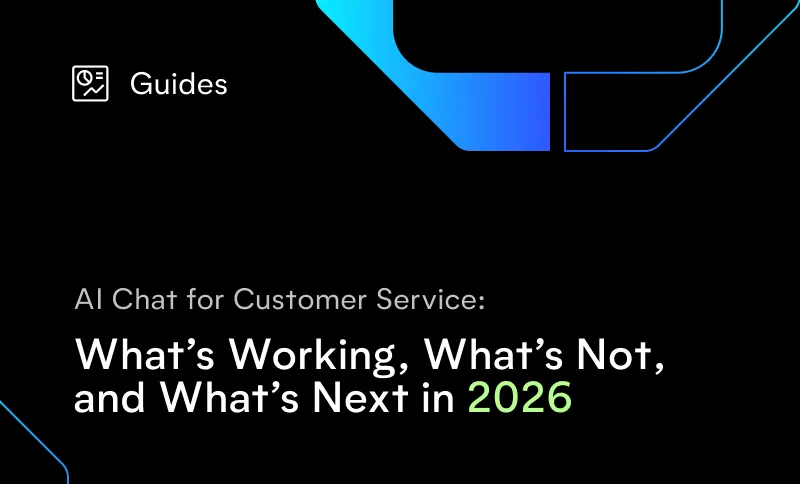
As business leaders look toward 2022, the call for digital transformation has never been louder.
According to The 2021 Gartner CEO and Senior Business Executive Survey, the top request of CEOs to CIOs is “digitalization” as CEOs look to CIOs and their teams to “frame and set an agenda for the use of technology.”
But before the upcoming year’s strategies and iterations are set in motion, customer service experts are taking a deeper look to set them up for future success.
And what they’re finding is completely shifting their idea of innovation.
According to the survey, the top two reasons for pursuing digital initiatives are to enhance customer experience (58%) and improve employee productivity (57%), categories which were each upended by the Covid-19 pandemic and its effects.
Customer experience (CX) and employee experience (EX) have long been topics pursued in silos – often led by completely different teams, goals, and information sets.
Enter total experience, or TX.
TX makes the case for identifying the needs of both the customer and the employee to build more lasting and impactful business outcomes.
Stakeholders in customer service and workforce management should take note.
It’s a strategy that’s not only growing in prominence, but one that today’s technologies are prepared to meet. Here’s what you should know.
What customer service leaders should know
The use of total experience leads to better results for the customer, as they’re provided a more comprehensive selection of digital channels to choose from.
In addition, more empowered employees under a TX approach means greater availability and better conversations for customers who need to interact with an agent.
Increase both employee and customer retention by investing in multiexperience technologies to improve user experiences across channels, devices, touchpoints and interaction modalities. -Gartner Recommendations
This experience-driven agenda for technology investments is key, according to Gartner. By taking into account every touchpoint of a customer-employee relationship, businesses develop digital initiatives that increase confidence in customers and employees and drive satisfaction and loyalty.
In customer service, this means more productive agents and, in turn, better served customers.
Taking it one step further, TX should also leverage data and analytics to remove barriers between shared customer-employee experiences.
For example, if a customer experience leader is able to use technology to surface real-time insights about trending customers requests in a given period, they can quickly develop channels to automate certain flows or make more agents available for tier-2 and above requests.
Related: Will AI Replace Contact Center Agents?Will AI Replace Contact Center Agents?
What workforce management leaders should know
Workforce management challenges have grown in tandem with rising customer demands. For employee experience leaders, it can be difficult to see down the digital transformation roadmap when staffing against customer uncertainty is blocking the way.
A global talent shortage creates a major obstacle to fulfilling the top priorities of CEOs: growth and a notable increase in, and focus on, technology-related and workforce areas. A total experience strategy would connect customers and employees, supported by technologies and multiple modalities. -Gartner
For contact centers in particular, TX means empowering agents to connect with customers more directly.
This can be achieved with experience-driven solutions that automate tier-1 customer conversations and allow employees to focus on more engaging interactions.
The key for workforce management leaders is finding an automation solution that can make this happen and maintain or even improve customer satisfaction scores at the same time.
For the employee, TX innovation should also make their technology interactions more seamless. A solution shouldn’t just offload tasks, but work alongside agents to execute intelligent conversation handoffs and generate work orders, tickets, or automated summaries when there’s crossover between employees and automation.
Employee experience leaders can use TX to provide a framework. They can join CX leaders in advocating for the customer, while ensuring that any investment takes into account the employee as an equally important stakeholder.
Why every business leader should care
Gartner’s strategic planning assumption is that “By 2026, 60% of large enterprises will use total experience to transform their business models to achieve world-class customer and employee advocacy levels.”
Whether CX or EX has undergone more growth – or seen more challenges – at your organization, it’s easy to see how recent market challenges are bringing the two worlds together.
Isolating the customer from the employee from a technology standpoint may make sense on a departmental level, but as the world shifts more rapidly every year to a digital ecosystem, the pain points of siloed strategies will only grow.
As a Top Strategic Technology Trend for 2022, TX affords leaders the best opportunity to explore modern technologies that focus on reducing friction at every turn of a customer journey and every interaction an employee has with technology.



.svg)


